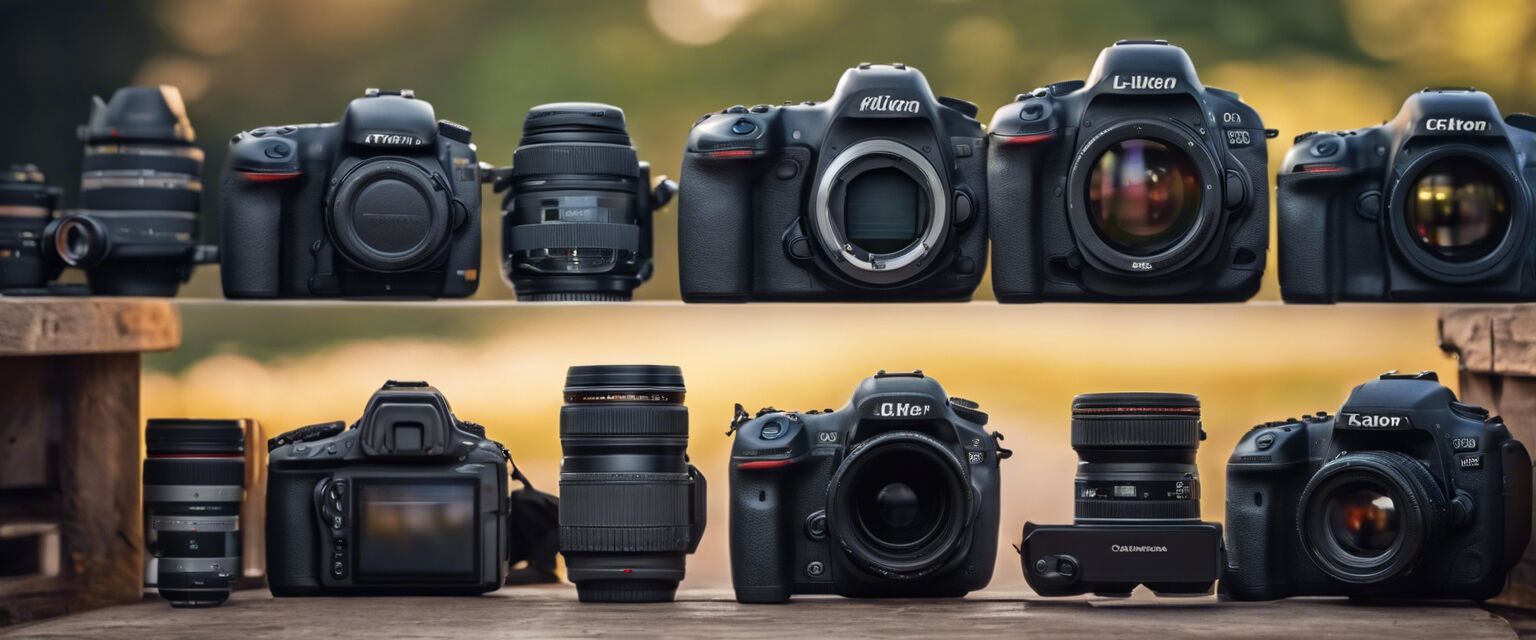
DSLR Camera Buying Guide
Key Takeaways
- Understand the different types of DSLRs available.
- Consider your photography needs and budget.
- Look for important features such as sensor size, autofocus, and connectivity.
- Explore various camera accessories to enhance your photography experience.
Choosing the right DSLR camera can be overwhelming, especially with the wide variety of options available in the market today. This comprehensive guide aims to simplify the decision-making process, ensuring that you find the perfect DSLR camera to capture your memories and inspiration. Whether you're moving from a smartphone to a camera or are looking to upgrade your current equipment, we've got you covered.
Types of DSLR Cameras
Before delving into the features, it is important to understand the different types of DSLR cameras that exist. Here’s a quick overview:
| Type | Description | Ideal For |
|---|---|---|
| Entry-Level DSLRs | These are user-friendly cameras for beginners. | Hobbyists, beginners |
| Mid-Range DSLRs | These offer a balance of features and price. | Enthusiasts, serious hobbyists |
| Professional DSLRs | High-end features designed for professional use. | Professionals, experts |
Essential Features to Consider
1. Sensor Size and Type
The sensor is critical to image quality. Common sizes include:
| Sensor Size | Advantages | Disadvantages |
|---|---|---|
| Full-Frame | Higher resolution, better low-light performance. | More expensive, heavier. |
| Cropped (APS-C) | Lighter, less expensive, great for telephoto photography. | Smaller field of view, less low-light performance. |
2. Autofocus System
Look for a camera with a fast and accurate autofocus system. A higher number of focus points can improve performance.
3. Connectivity Options
Modern cameras come with various connectivity options, such as:
- Wi-Fi
- Bluetooth
- NFC
These features enable easy sharing and remote control.
4. Lens Compatibility
Choosing a camera brand often restricts you to its specific lens ecosystem. Always consider the availability and variety of lenses.
Choosing the Right Accessories
Accessories can greatly enhance your photography experience. Some essential accessories include:
- Camera bag
- Tripod
- Additional lenses
- External flash
For a more extensive list of camera accessories, check out our Camera Accessories page.
Photography Workshops
Consider attending photography workshops to improve your skills. They can provide hands-on experience and valuable insights. Visit our Photography Workshops page to learn more.
Price Range and Budget
Your budget will largely influence your options. Here’s a general idea of what you can expect:
| Category | Price Range |
|---|---|
| Entry-Level DSLRs | $400 - $800 |
| Mid-Range DSLRs | $800 - $1500 |
| Professional DSLRs | $1500 - $3000+ |
Navigating Customer Reviews
Reading customer reviews can provide insights into real-world performance. Look for reviews that highlight both pros and cons and consider them in line with your own needs.
FAQs
1. Can I use my smartphone instead of a DSLR?
While smartphone cameras have improved, DSLRs offer superior image quality, flexibility, and manual control.
2. What is the best time to buy a DSLR?
Consider purchasing at the end of the model year or during holiday sales to snag the best deals.
3. Do I need a full-frame camera?
A full-frame camera is beneficial for professionals, but entry-level and mid-range options can suit most hobbyists.
Pros
- Excellent image quality
- Interchangeable lenses
- Greater control over settings
- Highly customizable
Cons
- Heavier and bulkier compared to point-and-shoot cameras
- Potentially steep learning curve for beginners
- Costs can add up with lenses and accessories
Conclusion
Investing in a DSLR camera is a fantastic way to elevate your photography skills. By considering your needs, understanding the features available, and exploring the right accessories, you can make an informed choice. Remember to check out our section on Entry-Level DSLRs and Professional DSLRs to explore a variety of options tailored to your needs.
Final Thoughts
The journey to finding the perfect DSLR camera begins with understanding what works best for you. We hope this guide has equipped you with the knowledge needed to confidently make your purchase.










